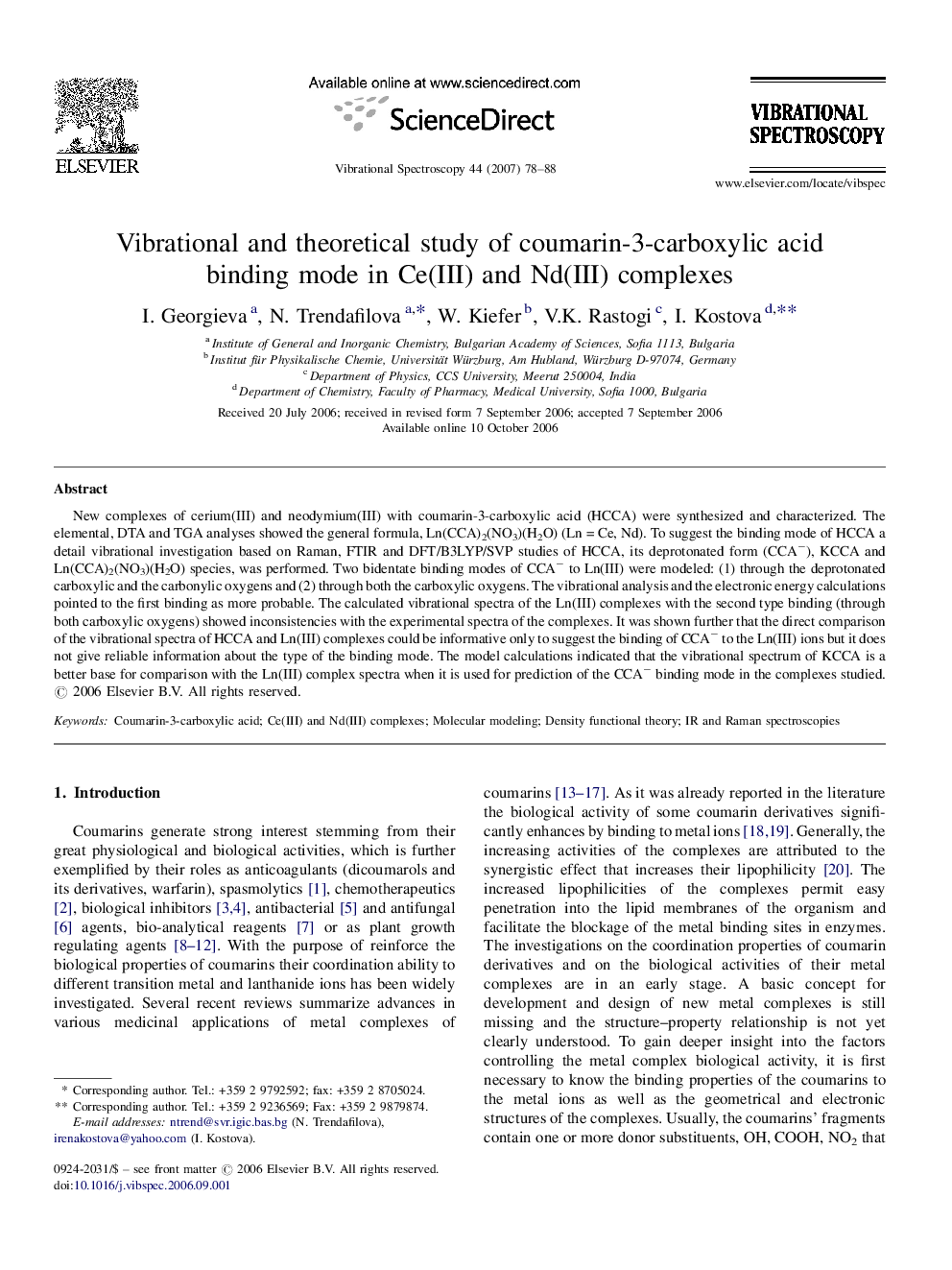| کد مقاله | کد نشریه | سال انتشار | مقاله انگلیسی | نسخه تمام متن |
|---|---|---|---|---|
| 1250984 | 970879 | 2007 | 11 صفحه PDF | دانلود رایگان |

New complexes of cerium(III) and neodymium(III) with coumarin-3-carboxylic acid (HCCA) were synthesized and characterized. The elemental, DTA and TGA analyses showed the general formula, Ln(CCA)2(NO3)(H2O) (Ln = Ce, Nd). To suggest the binding mode of HCCA a detail vibrational investigation based on Raman, FTIR and DFT/B3LYP/SVP studies of HCCA, its deprotonated form (CCA−), KCCA and Ln(CCA)2(NO3)(H2O) species, was performed. Two bidentate binding modes of CCA− to Ln(III) were modeled: (1) through the deprotonated carboxylic and the carbonylic oxygens and (2) through both the carboxylic oxygens. The vibrational analysis and the electronic energy calculations pointed to the first binding as more probable. The calculated vibrational spectra of the Ln(III) complexes with the second type binding (through both carboxylic oxygens) showed inconsistencies with the experimental spectra of the complexes. It was shown further that the direct comparison of the vibrational spectra of HCCA and Ln(III) complexes could be informative only to suggest the binding of CCA− to the Ln(III) ions but it does not give reliable information about the type of the binding mode. The model calculations indicated that the vibrational spectrum of KCCA is a better base for comparison with the Ln(III) complex spectra when it is used for prediction of the CCA− binding mode in the complexes studied.
Journal: Vibrational Spectroscopy - Volume 44, Issue 1, 15 May 2007, Pages 78–88